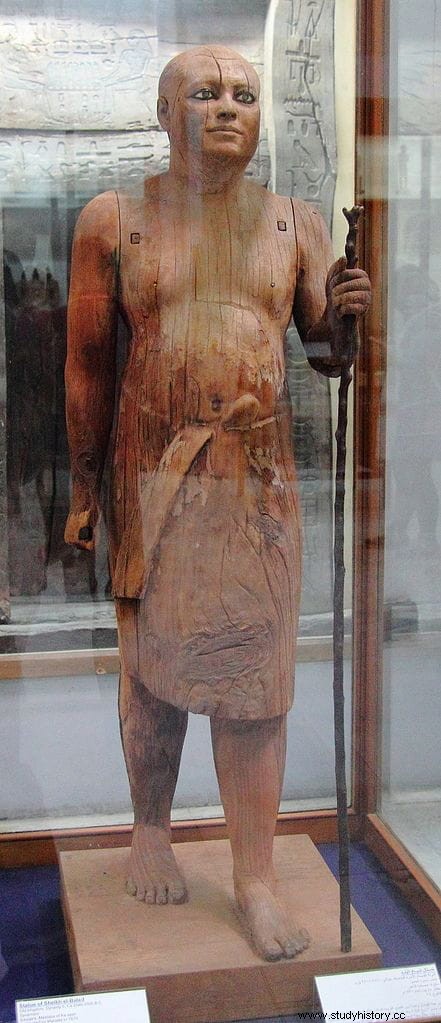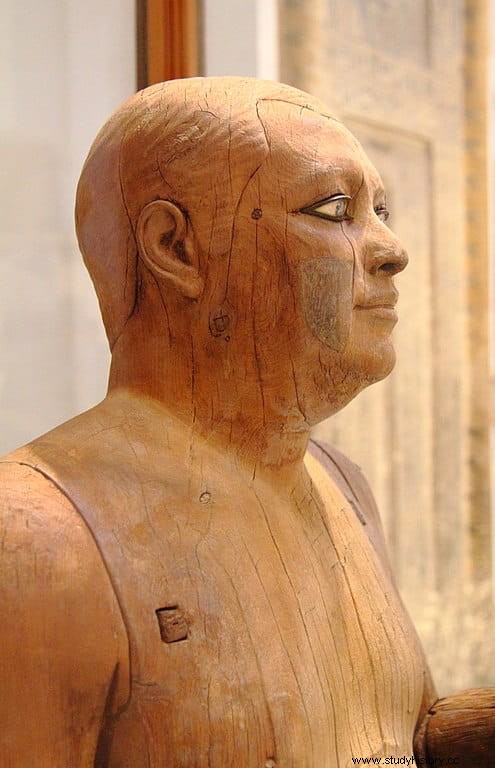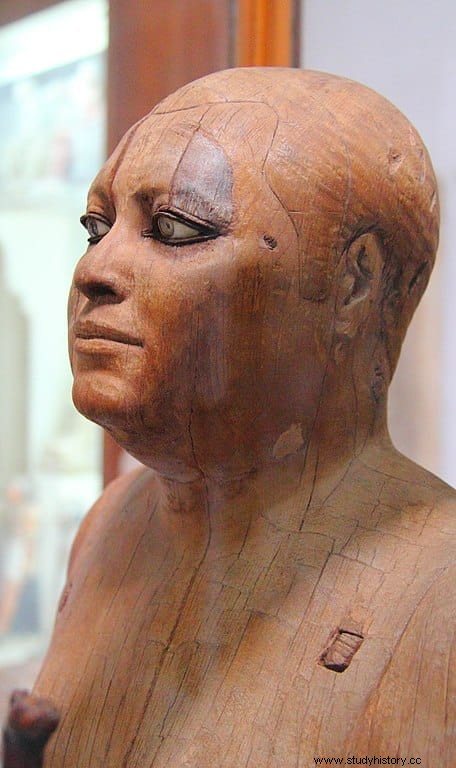When Auguste Mariette discovered the Serapeum of Saqqara in 1851 he found many objects inside. Among them was a statue known today as the seated scribe and that he represented a high Egyptian official. At that time, this sculpture stood out for its marked realism, which contrasted with the hieratic way in which the pharaohs and gods were represented.
Mariette stayed in Egypt as the first Conservator of monuments , a position created by the government expressly for him in 1858, and in 1863 he created the Cairo Museum in order to protect the archaeological sites and stop the uncontrolled release of pieces. During all that time he continued to carry out excavations and one of them would return another surprise in the field of sculpture.

In 1860 while excavating a mastaba in the Saqqara necropolis, north of the Step Pyramid of Djoser, he unearthed an exceptional sculpture. The Egyptian workers immediately realized the unique character of the discovery and, impressed by its realism, named it Cheik-El-Beled (in Arabic the head of the village , that is, the mayor), possibly because it reminded them of someone from the locality of him.
It actually represents Kaaper, an Egyptian nobleman who lived in the late 4th or early 5th dynasty (circa 2500 BC), and the mastaba (today called the Kaaper mastaba or Saqqara C8) was the burial place of his family, since that another sculpture of what is supposed to be his wife was also found, although the name has not been preserved.
Kaaper was the head of the reader priests (kher-heb), those whose mission was the reading and recitation of religious texts and sacred hymns during temple rituals and official ceremonies. But he also held the position of governor of Lower Egypt and scribe of the royal army during the reign of Pharaoh Userkaf, the first of the Fifth Dynasty.

Since 1914 it is known that he was the grandson of the princess and priestess Wenschet, because next to the name of his sons and daughters Kaaper appears on the false door from his tomb in the Giza necropolis, discovered that year by George Reisner.
The sculpture is made of sycamore wood, copper, alabaster, rock crystal and obsidian. It has a height of 1.12 meters, which is almost life-size. The priest is depicted with a large stomach, heavy hips and fleshy wrinkles on his back, walking and holding in his left hand the staff that symbolizes his power (replaced by a copy today), and in the right probably a cylinder .

He is dressed in a long skirt knotted below the navel, probably the kind nobles wore when they were at home, rather than the semi-pleated skirts reserved for his office. His short hair emphasizes the round lines of the head and face and blends with the opulence of the overall image.
Unlike stone statues, in which the figure never completely detaches from the material from which they were carved, the wooden statue is freestanding. It has no back support and its limbs are not attached to the original material, but instead were carved separately and then attached to the figure.

The striking realism of the statue is accentuated by the eyes, made using quartz and small copper plates. The fact that he is represented with a certain degree of obesity, something common in other representations of the same period, may be due, according to Fred S. Kleiner, to the desire to demonstrate the well-off life of the person and his relatively high position in society.
The fact that it has been preserved as wood is a perishable material may be because it was originally covered with a delicate layer of painted plaster, of which only a few remains remain. Today it can be seen, permanently exhibited, in the Egyptian Museum in Cairo.
